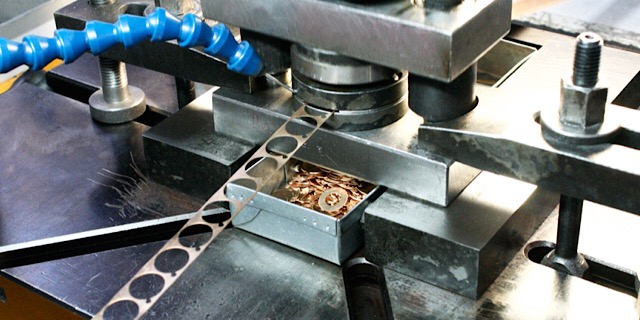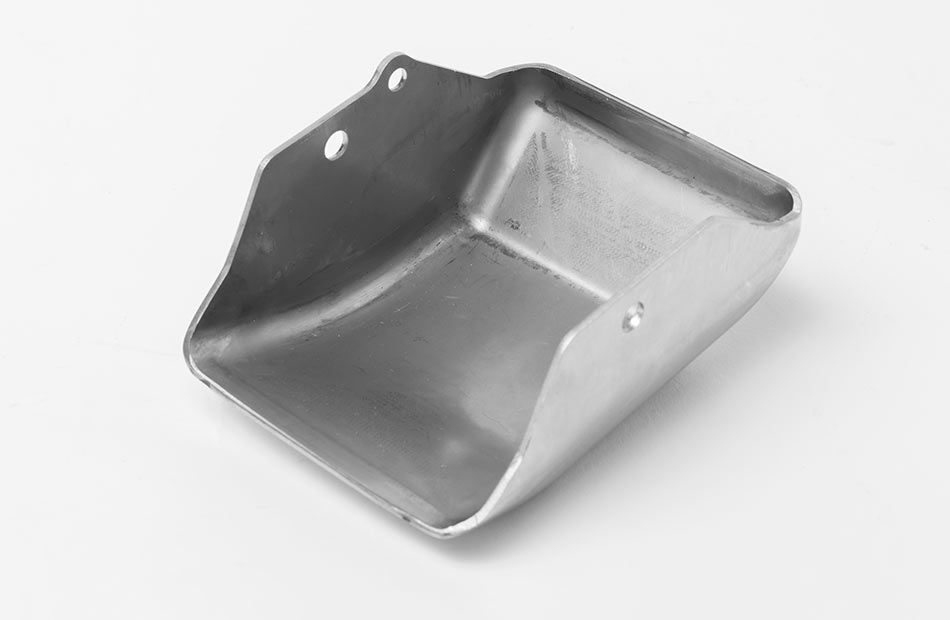The Development of Metal Stamping Technology: A Comprehensive Review
Unleashing the Possible of Steel Stamping: Professional Tips and Best Practices Revealed
In the world of steel stamping, where precision and efficiency reign supreme, the pursuit to maximize procedures and unlock surprise capacities is a continuous search. Proficiency refined over years of market experience, combined with sophisticated modern technologies and cutting-edge techniques, holds the essential to accomplishing unequaled results. As we navigate through the elaborate world of metal marking, a better check out the ins and outs of tooling style, product choice, production performance, quality assurance, and arising patterns guarantees a gold mine of insights waiting to be uncovered. Remain tuned to uncover just how these professional tips and ideal techniques can transform the steel stamping landscape.
Tooling Style Optimization
Enhancing tooling design is important for boosting efficiency and precision in steel marking procedures. A well-balanced tooling layout can considerably influence the high quality and cost-effectiveness of metal stamping procedures. By meticulously taking into consideration factors such as material selection, die configuration, and component geometry, makers can improve manufacturing processes and improve general item quality.
One key facet of tooling style optimization is choosing the most suitable products for the passes away and punches used in the marking procedure. Appropriate die design can help avoid issues such as wrinkling, tearing, and too much springback, leading to greater production returns and lowered scrap rates.
Moreover, enhancing part geometry through tooling design can aid lessen material waste and production time. By thoroughly shaping passes away and punches to match the preferred part specifications, suppliers can attain tighter tolerances and improved component top quality. Generally, investing time and resources in maximizing tooling style can lead to substantial lasting benefits for metal stamping procedures.

Product Choice Approaches
Tactically choosing products for metal marking tooling is vital for guaranteeing longevity and performance in producing procedures. When selecting materials for steel marking applications, a number of key factors have to be thought about. The first consideration is the sort of product being stamped. Different materials, such as aluminum, stainless-steel, or copper, call for particular tooling materials to guarantee optimal performance and long life.
An additional crucial element in material selection is the predicted manufacturing volume - Metal Stamping. For high-volume production runs, tooling materials with superior wear resistance and strength, such as device steels or carbide, are commonly favored to withstand the roughness of continual marking procedures
In addition, the complexity of the stamping layout and the required precision additionally play a significant role in material option. For elaborate marking patterns or tight tolerances, products with high thermal conductivity and outstanding machinability, like beryllium copper or device steel alloys, might be preferable to attain the desired outcomes.
Manufacturing Effectiveness Methods
To boost manufacturing outcome and minimize manufacturing expenses, applying reliable techniques in steel stamping processes is critical. One essential technique for boosting production performance is spending in automation. Automated metal stamping makers can carry out tasks with precision, uniformity, and at a much faster price than hands-on labor, leading to raised performance and minimized cycle times. Additionally, applying predictive maintenance methods can assist stop unanticipated downtime by determining potential tools failures prior to they occur. By regularly monitoring device efficiency and dealing with problems proactively, makers can optimize manufacturing timetables and minimize disturbances.
An additional method to enhance production effectiveness is with constant process improvement. Conducting regular audits and performance evaluations can assist identify bottlenecks, inadequacies, and areas for enhancement within the steel marking procedure. By evaluating data and feedback from visit the site these assessments, producers can execute targeted solutions to streamline operations, increase throughput, and make best use of total performance.
Furthermore, taking on lean production principles, such as 5S technique and Kanban systems, can help remove waste, boost process, and enhance total efficiency in steel marking operations. By cultivating a culture of continual enhancement and empowering staff members to contribute concepts for effectiveness gains, manufacturers can open the full possibility of their metal marking processes.
Quality Control Actions
Building on the structure of effective manufacturing his comment is here methods in steel stamping procedures, ensuring rigid quality control procedures is crucial for maintaining item standards and consumer satisfaction. Quality control in steel marking involves organized evaluation, screening, and monitoring of the production refines to determine and remedy any variances or flaws that might endanger the final product's stability (Metal Stamping). Applying steps such as regular devices upkeep, in-process examinations, and extensive testing of finished parts can help find concerns early on and prevent costly rework or product recalls
Regular audits and evaluations of high quality processes can assist identify areas for improvement and ensure consistency in product high quality. By promoting a culture of top quality awareness among workers and supplying ample training on top quality control treatments, makers can boost overall product reliability and brand credibility.

Innovative Steel Stamping Technologies
Improvements in steel stamping innovations have transformed the production industry, improving performance and accuracy in the manufacturing procedure. Servo presses provide exceptional control over the stamping procedure, enabling for modifications in dwell, speed, and pressure time with exceptional precision.

In addition, the adoption of additive manufacturing methods in steel stamping, such as 3D printing of die elements, try here has structured the tooling layout and production process. This strategy permits better layout flexibility, rapid prototyping, and cost savings in tooling production. By leveraging these ingenious modern technologies, suppliers can unlock new levels of efficiency, high quality, and competitiveness in the metal marking industry.
Conclusion
Finally, the optimization of tooling design, strategic material selection, efficient production techniques, high quality control procedures, and ingenious modern technologies are crucial for unleashing the complete possibility of steel marking. By applying these ideal techniques and experienced pointers, suppliers can boost performance, boost high quality, and stay competitive in the metal stamping sector. It is critical for firms to continually evaluate and boost their procedures to accomplish success in this area.
As we navigate through the intricate globe of steel stamping, a closer look at the intricacies of tooling design, product option, manufacturing effectiveness, high quality control, and emerging trends promises a prize trove of insights waiting to be unearthed. A well-balanced tooling layout can dramatically influence the high quality and cost-effectiveness of metal marking operations.Building on the structure of effective production strategies in metal marking processes, guaranteeing stringent high quality control steps is necessary for preserving item requirements and customer contentment. Quality control in steel stamping includes systematic examination, testing, and monitoring of the production refines to identify and remedy any type of deviations or issues that might compromise the last item's stability.In conclusion, the optimization of tooling layout, tactical product choice, reliable production techniques, top quality control measures, and cutting-edge technologies are crucial for unleashing the complete potential of metal stamping.